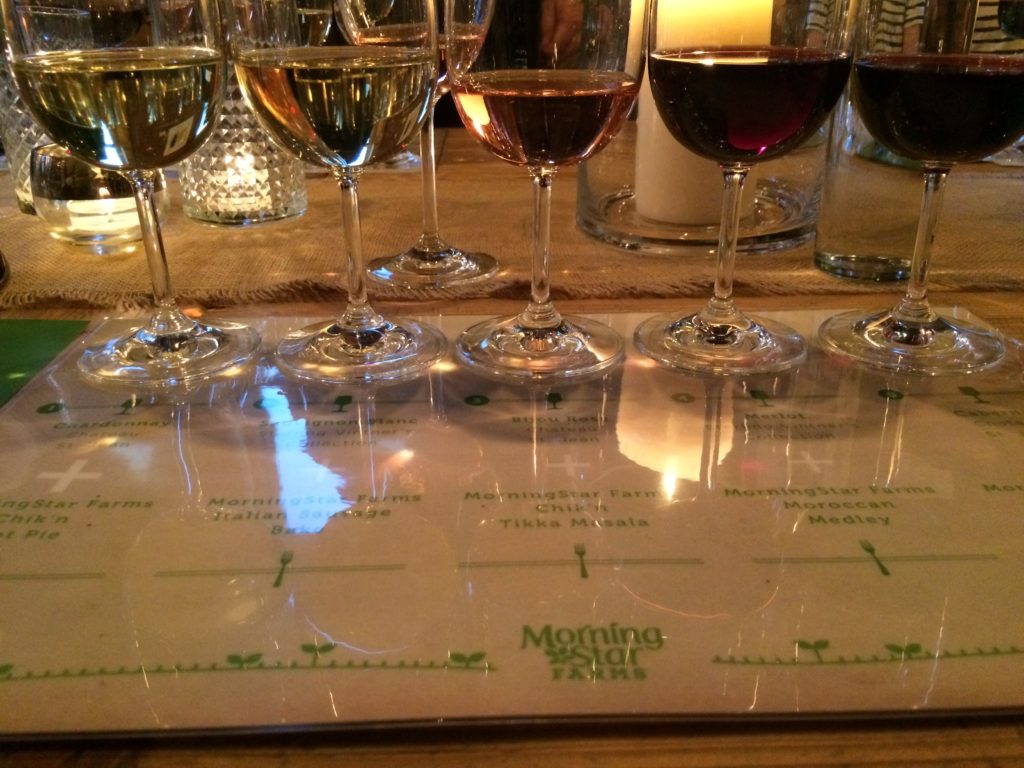This post is sponsored by MorningStar Farms.
If you’ve been reading my blog even a little bit, it’s pretty obvious that I like to cook. Sure, getting to eat delicious food is part of it, but even more so, I love the therapeutic aspect of cooking. Working with my hands relaxes me, and having the chance to be creative with various ingredients and cooking methods helps me hit the reset button.
It wasn’t always that way, though. As a college student living on my own for the first time, I had no idea what to do in the kitchen, but I was curious. In my senior year, I had an internship at a publishing house that did cookbooks, and I got sent home with a bunch of different titles. I remember sitting on my floor (I did not have much in the way of furniture) trying to figure out how to recreate what I saw on those pages. Some of my early attempts were hilariously bad, but I was so hungry, I rarely cared. Well, there was that one time I tried to grill romaine leaves on a George Forman grill…Wouldn’t recommend anyone try that.
I also relied a lot on frozen meals. Amy’s bowls—especially the brown rice bowl and pasta shells—stick out in my mind. Now the company makes a ton of varieties I’ve never even heard of that my 20-year-old self would have definitely been into. Of course, this was in my pre-RD days when I never thought about sodium or preservatives or any of that other fun stuff, so I was mostly concerned with cost and taste, but in the grand scheme of things, my health nut Grandma and chemical-conscious mom had at least turned me on to some better alternatives that were available then. A lot more companies have been working on creating healthy, tasty frozen meals in the decade-plus since then, so even though I wouldn’t encourage making frozen meals a mainstay, having a few convenient options in the freezer can help you stick to a healthy eating routine.
Presentation is a whole other matter. You don’t need a degree in food psychology to know that eating soggy stir-fry from a cardboard bowl while standing at the kitchen counter is not going to be very satisfying. Research from the Cornell Food and Brand Lab shows many ways that what we see on the plate influences how much we eat and how fulfilled we feel.
Earlier this fall, I went to an event hosted by MorningStar Farms where we tasted some of their new products and enjoyed a wine pairing with each course.
It definitely didn’t feel like we were eating frozen food. I started thinking about some other ways to make frozen meals for satisfying. MorningStar Farms was kind enough to send me some samples of their new bowls to play with.
Here are my top 5 ways to make a frozen meal more satisfying:
*Plate it. Once you’ve heated the item up, get out a real plate or bowl to eat from. It’s a small swap, but it makes you feel so much more civilized and like you’re having a dining experience. Sit down and eat slowly, putting your fork down between bites if you need help pacing yourself.
*Add veggies. I love to wilt in some greens (aka zap them in the microwave) or add whatever leftover or thawed frozen veggies I have handy. Aside from adding nutrients like essential vitamins, minerals, and fiber, it also ups the mental satiety factor by giving you more colorful stuff to see on the plate.

*Put an egg on it. Having a vegetarian entree but want a little more protein? A simple poached or fried egg makes your meal more satisfying by providing filling fat and a little extra protein.
*Garnish. Dress you meal up with a sprinkle of cheese, a teaspoon of nuts or pumpkin seeds, fresh herbs, or a drizzle of olive oil to add some texture and flavor.
*Pair it with wine or beer. No shame in having a glass of red with your microwaved pasta shells. File this one under: “Why the hell not?”
Do you eat frozen meals? Do you ever try to dress them up?
Disclosure: Though I was not compensated for my time, I received free samples of MorningStar Farms frozen meals for this post. Opinions are my own.

